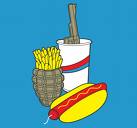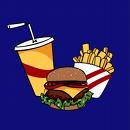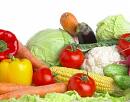
|
Pediatric Occupational, Physical, ABA/Behavioral, Feeding, Speech, and Language Therapies Main Clinic: 931-372-2567 1445 East 10th Street Cookeville, TN 38501 Email: [email protected] HIPAA Secure Email: [email protected] Fax: (931) 372-2572 ABA Clinic: 931-201-9534 400 Dubois Road Cookeville, TN 38501 Email: [email protected] Please call today to get started! Most insurances accepted! |

|
| Who needs therapy? | SE HABLA ESPAÑOL |
Protecting Our Futrue: Health and Wellness of Children

A workshop developed by
Pamela A. Popper, Ph.D., N.D.
Copyright PB Industries, Inc. 2006
Children are developing serious health problems
n 1 in 4 children suffer from eczema
n 1.5 million children suffer from asthma
n 1 in 6 children has some form of allergy
n Millions of children are medicated as a result of being hyperactive
n Ear infections are considered a routine part of childhood
Children are developing
adult diseases
n 30% of type-2 diabetics are now adolescents or people in their 20’s
n The fastest growing population of overweight people in the
n 60% of overweight children aged 5-10 have a risk factor for heart disease such as high blood pressure or elevated insulin levels (1)
The reason?
Lifestyle!
n Diet
n Lack of Exercise
n Stress
n Sleep Deprivation

Diet
n Too much animal protein and fat
n Too much processed and refined food
n Not enough fruits, vegetables, whole grains and legumes
n Calorie displacement – “bad” foods replace protective foods like fruits and vegetables in the diet
The average child consumes 275 pounds of sugar per year – almost ¾ of a pound daily!
Sugar suppresses the immune system:
n Cell-mediated immunity is depressed by 50% for 120 minutes after ingestion of 75 grams of sugar (2)
n 100 grams of sugar reduces white blood cells’ ability to engulf bacteria. Maximum suppression is 2 hours after ingestion and remains so for up to 5 hours
Sugar consumption is related to Attention Deficit Disorder
Sugar causes the “fight or flight” response:
n Researchers at
n Adrenaline levels in children were 10 times higher than normal after consuming sugar. (3)
According to the Feeding Infants and Toddler’s Study: (4)
n 1/3 of children under 2 years old had no fruit or vegetables on the day of the survey
n French fries were the most common vegetables consumed by children 15 months or older
n Over 60% of 1-year olds were eating dessert or candy at least once per day
n By 19 months old, 70% of children were having dessert at least once per day
Children consume too much animal food
n Animal foods are calorie-dense, contributing to weight gain
n They are high in fat
n As animal food intake increases, the age of sexual maturation is lowered
n This increases the risk of cancer due to a longer lifetime exposure to hormones

Children consume too much fat!
n A diet high in fat is linked to weight gain, increased risk of heart disease, cancer, diabetes and other degenerative conditions
n A sandwich and fries from most fast food restaurants can contain as much as an entire day’s fat grams – in one meal!
n According to the National Cancer Institute, “fat is the substance most closely linked to cancer.”
Children consume processed foods containing additives
Studies have shown that food additives have an effect on learning and behavior:
n A study in
n A study conducted at the Alberta Children’s Hospital resulted in half of hyperactive children showing improvement when artificial colors, flavors, chocolate, MSG, preservatives and caffeine were eliminated from the diet. (6)
Trans Fat
n Formed when liquid vegetable oils are converted to solid form
n It is found in packaged, processed foods, such as cookies, crackers, soups, bread and cereals
n It appears on the label as “partially hydrogenated vegetable oil”
n The benefit for the manufacturer is that it is a preservative and holds food together
n According to Walter Willett, Department of Nutrition,
Trans fat increases plasma concentrations of LDL cholesterol and lowers HDL cholesterol – the combined effect is twice that of saturated fat
n 30,000 premature deaths each year are attributed to trans fat consumption
n According to a National Academy of Sciences report issued on September 5, 2002, “There is no safe level of trans fatty acids.”
Manufacturers are now substituting palm oil and other saturated fats for trans fat in packaged food products, which is not a real improvement. Read labels carefully, since consumption of packaged foods can increase fat intake significantly.

Dairy products are not health foods!
Dairy products have been linked to juvenile diabetes, chronic infections, asthma, constipation, allergies, and fatigue in children
For more information on this topic, visit www.pcrm.org, the website for the Physicians’ Committee for Responsible Medicine

Children do not consume enough healthy foods
n 51% of kids eat less than one serving of fruit per day
n 29% of kids eat less than one serving of non-fried vegetables each day
n 25% of kids consume the recommended number of servings of grains, most of which are refined (7)
Dehydration
Many children consume soft drinks, juices, sports drinks, coffee, tea and flavored water instead of filtered water
Only water will hydrate the body, and children should consume half their weight in ounces of water daily
Quaker Oats Chewy
Oatmeal Granola Bars
Granola (whole grain rolled oats, rolled whole wheat, partially hydrogenated vegetable oil, whole wheat flour, molasses, honey, cultured whey, soy lecithin, natural flavors, water), corn syrup, crisp rice (rice, sugar, salt, barley malt), raisins, oatmeal cookie pieces (sugar, wheat flour, rolled oats, partially hydrogenated vegetable oil, whole wheat flour, cinnamon, salt, sodium bicarbonate), sugar, corn syrup solids, glycerin, high fructose corn syrup, partially hydrogenated vegetable oil, sorbitol, salt, natural and artificial flavors, cultured whey, molasses, soy lecithin, cinnamon, BHT, malted barley syrup, citric acid, water.
Yoplait Light Fat Free Yogurt
Cultured pasteurized grade a nonfat milk, blueberries, high fructose corn syrup, modified corn starch, whey protein concentrate, kosher gelatin, natural flavor, tricalcium phosphate, citric acid, aspartame, potassium sorbate, red #40, Vitamin A acetate, blue #1, Vitamin D3
Nutrigrain Blueberry Cereal Bar
Filling – high fructose corn syrup, corn syrup, blueberry puree concentrate, glycerin, sugar, modified corn starch, sodium alginate, natural and artificial blueberry flavor, citric acid, sodium citrate, modified cellulose, dicalcium phosphate, malic acid, red #40, blue #1
Enriched flour, whole grain oats, sugar, sunflower oil, high fructose corn syrup, honey, calcium carbonate, dextrose, nonfat dry milk, wheat bran, salt, cellulose, potassium bicarbonate, natural and artificial flavor, mono- and diglycerides, propylene glycol esters of fatty acids, soy lecithin, wheat gluten, corn starch, Vitamin A palmitate, carrageenan, niacinamide, sodium stearoyl lactylate, guar gum, reduced iron, B vitamins
Jif Creamy Peanut Butter
Roasted peanuts, sugar, molasses, partially hydrogenated vegetable oil, fully hydrogenated vegetable oil, mono- and diglycerides, salt
Raisin Nut Bran Cereal
Whole grain wheat, sugar, raisins, almond pieces, partially hydrogenated vegetable oil, corn bran, glycerin, brown sugar syrup, corn syrup, salt, honey, trisodium phosphate, zinc, vitamins and minerals
Balance Nutrition Bar Cookie Dough Flavor
Protein blend (soy protein isolate, calcium caseinate, casein), high fructose corn syrup, cookies (wheat flour, sugar, canola oil, cocoa processed with alkali, salt, baking soda), sugar, fractionated palm kernel oil, nonfat milk, sunflower oil, natural flavor, nonfat yogurt powder (cultured nonfat milk), lactose, cocoa processed with alkali, oligofructose, high fructose corn syrup, cocoa butter, soy lecithin, dextrose, maltodextrin, salt, fish gelatin, caramel color
Changing children’s eating habits is important!
n As important as academic achievement
n As important as developing good work habits
n As important as learning appropriate behavior
Common Myths
n Everything in moderation is ok
n Kids outgrow their poor eating habits
n Kids outgrow their weight problems
n Kids will not eat healthy food
What about the debate as to what constitutes a healthy diet?
The scientific literature is quite clear – in places where the rates of degenerative disease are very low, such as in Asia and
Genetics does not explain these differences. When people from healthier cultures move to the
The Health-Promoting Diet for Children
n Plant-based – 90% of calories derived from fruits, vegetables, whole grains, legumes, nuts and seeds
n 10% of calories from animal foods
n Eliminate dairy foods
n Lots of whole, ripe, raw fruits and vegetables
n Low-fat – 20% or less of calories from fat for children over 2 years of age
n High fiber
n Reduced intake of refined foods, and particularly sugar, refined table salt, coloring agents, artificial sweeteners and other negative ingredients– read labels carefully!
n Adequate water intake daily
Start serving more fruits and vegetables
n Provide fruits and vegetables as after-school snacks
n Serve salads first for dinner when kids are hungriest
n Add raw vegetables to cooked pasta and combine with marinara sauce
n Add raw vegetables to rice and other grains for an interesting salad
Form the breakfast habit!
n After fasting, the body requires complex carbohydrates for fuel
n A high-fiber breakfast provides sustained energy for peak performance
If necessary, pack your child’s lunch
n Natural nut butter sandwiches on whole grain bread
n Vegetable wraps
n Salads
n Rice or pasta salads with veggies
n Pita pockets with veggies
n Beans and rice with salsa in a wrap
n Barbequed tofu
n Cereal and rice milk
n Instant soups or thermos of soup
Healthy Snack Ideas
n Soy yogurt
n Dried fruit and nuts
n Fresh fruit
n Veggies and dip or hummus
n Raw veggie wrap
n Natural peanut butter on whole wheat bread
n Leftover pasta or grain dishes in a tortilla wrap
n Instant soup
n Leftovers from dinner or lunch
n Whole grain cereals with plant milk
Teach children the difference between food and a treat
n Treats are to be enjoyed occasionally – at parties and other special events
n Food is what the body needs for fuel every day
n Set your child up for success – keep only healthy options at home and make the consumption of treats situational

Other health promoting habits
n Make sure your child gets adequate exercise
n Turn off the TV
n Avoid over-scheduling
n Insist that your child get enough sleep
n Set an example
Children are our most precious asset!
n The future quality of life of our children depends on their learning to practice healthy habits from parents, teachers and other influential people.
n Our children will very soon be charged with running our businesses, our government and our educational institutions. Their capacity to do so will be influenced by their health status.
“Protecting Our Future”
References
1 Woodward-Lopez, Gail, “Improving Children’s Academic Performance, Health and Quality of Life,” funded by the California Nutrition Network for Healthy, Active Families of the California Department of Health Services and the Public Health Institute
2 Bernstein, et al, “Depression of lymphocyte transformation following oral glucose ingestion,” Am J Clin Nutr 30:613, 1997
3 Jones, Tim, et al, “Enhanced adrenomedullary response and increased susceptibility to neuroglycopenia mechanisms underlying adverse effects of sugar ingestion in healthy children,” J Ped, vol.126 No 2, Feb 1995, 171-77
4 Commissioned by Gerber Products, Inc.
5 Swanson, James and Kinsbourne, Marcel, “Food dyes impair performance of hyperactive children in a laboratory learning test,” Science, 207 (1980) 1485-87
6 Kaplan, Bonnie, “Dietary replacement in preschool-aged hyperactive boys,” Pediatrics, 83, 1989: 7-17
7 The Center for
Site empowered by
WebOnTheFly